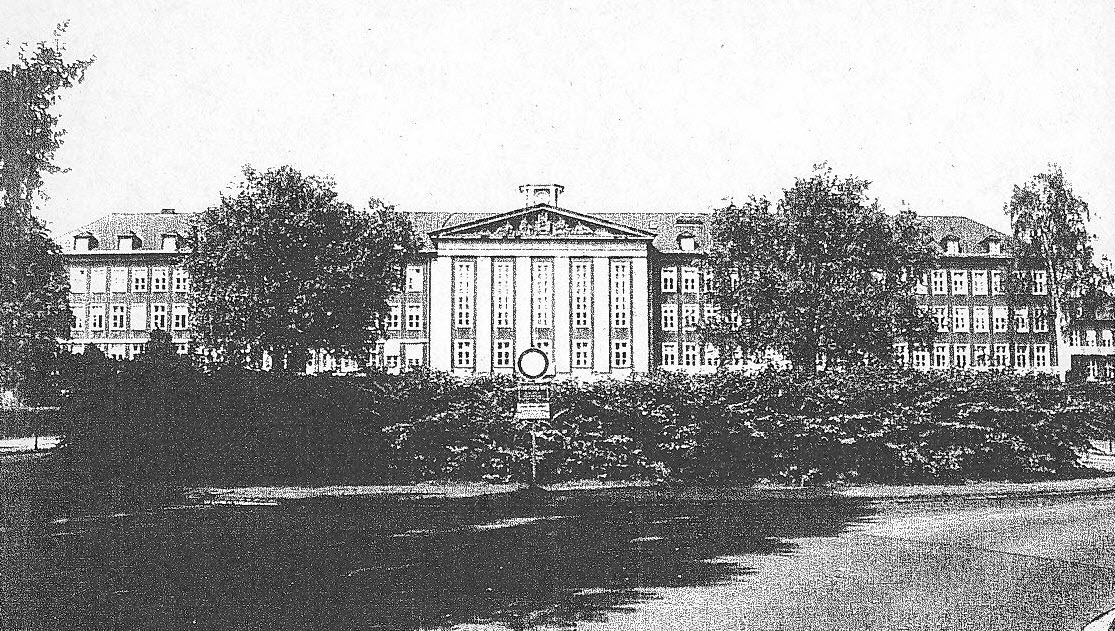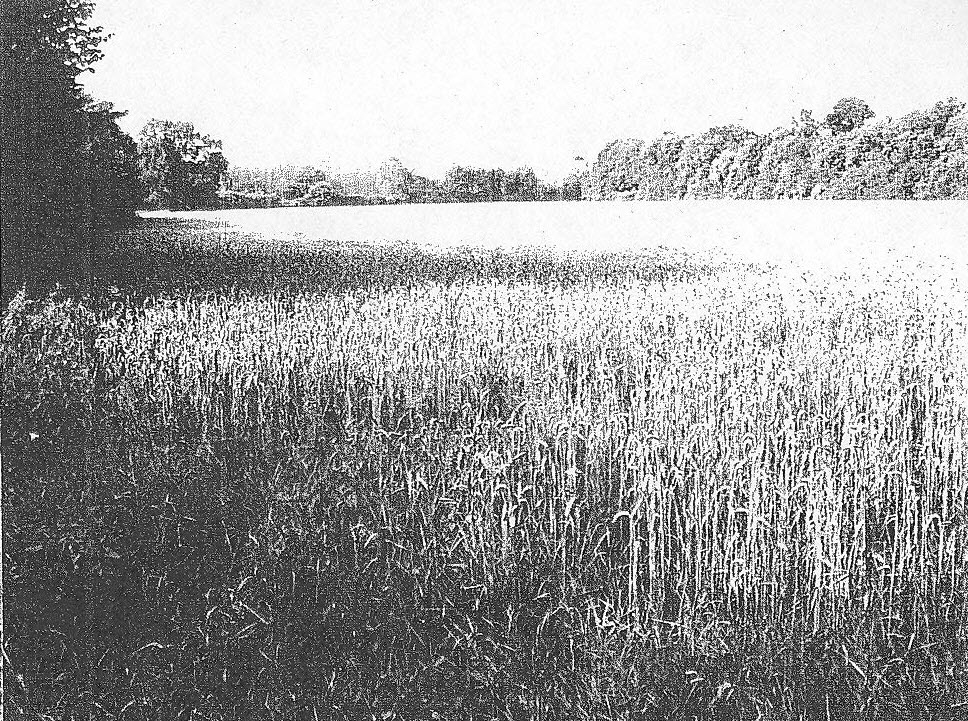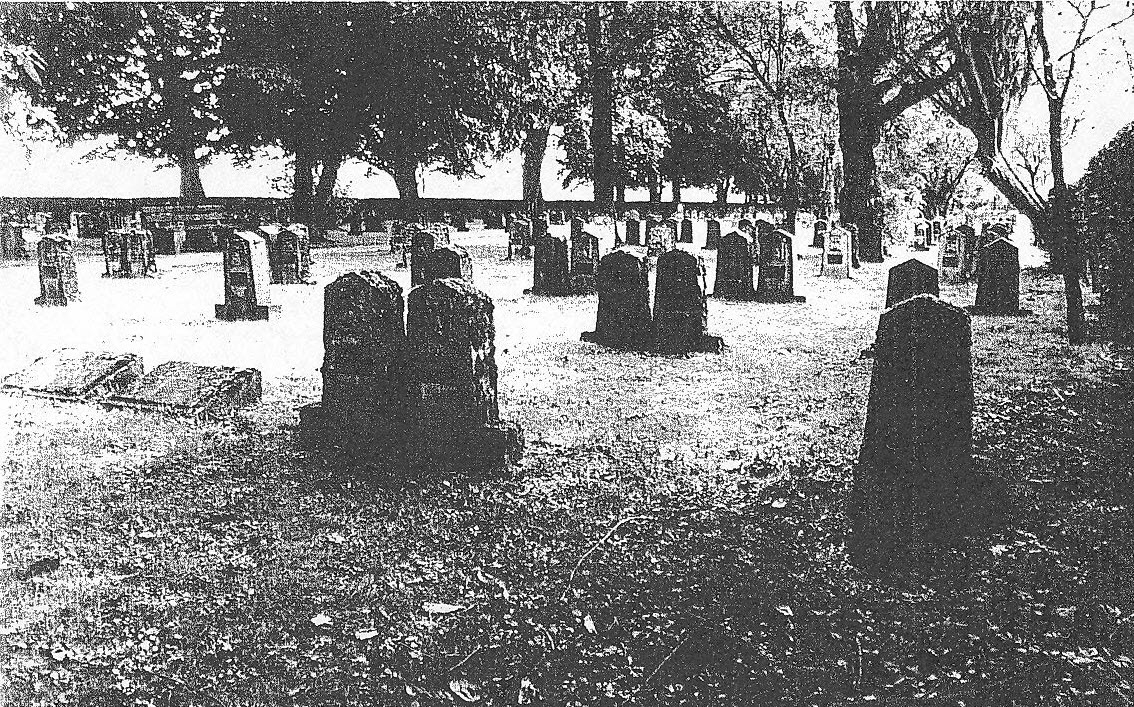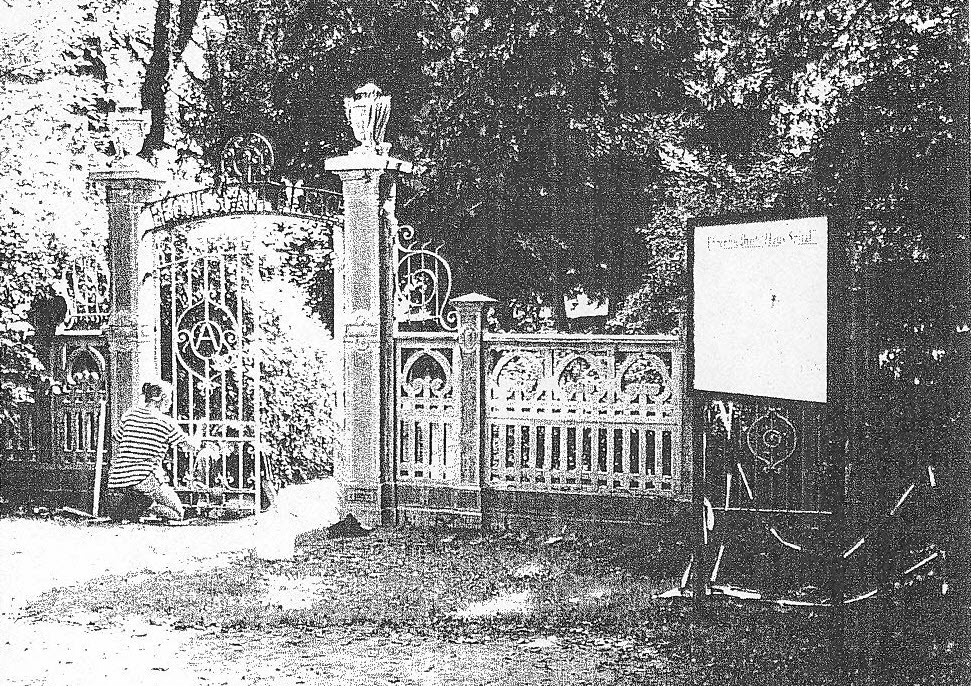|
Leslie N. Hood |
|
Leslie N. Hood Jr. |
|
Letter from: Barnhardine
Jostmeier Grosse Helkamp 3 48161 Muenster/Roxel Dear Mr.
Schroder: In today’s issue
of the “Muensterische Nachrichten”, 1 found your article regarding the
Pilot, Lieutenant Leslie N. Hood. As member of the DRK (German Red
Cross) I was en route to a meeting, on the 21st of February, 1945, as I
saw the parachutist land on a nearby meadow. He made himself known as
Lt. Leslie N. Hood. Since I was carrying my emergency kit, I was able to
provide him with first aid. His right arm had been torn off up to a
small stump. I tied off the wound and helped him to the extent I could
with the available bandages I was carrying with me. He was so thankful
and touched, that he gave me his camera and asked that I have the
pictures developed, and send them to his relatives along with personal
items, which I accepted in good faith. I pledged I would do this and was
determined to carry out my promise. Regrettably, this was not possible.
A `jeep’ (maybe German military vehicle of that type) appeared with
German Army members, who demanded in no uncertain terms that all papers
be turned over to them. The camera, which I was still holding in my
hands, was also taken. I had absolutely nothing left, not even his
address or home address that would have allowed me to follow thru with
my promise.
The soldiers
transported the badly wounded Lieutenant, first to the Martini-Stift
(Note: Stilt = a religious/charitable foundation, a nunnery or
monastery) at Buxtrup. It was located very close to the landing site and
served as a First Aid Station for wounded and ill personnel. The
soldiers assured me, that the Lieutenant would be taken to a military
hospital in Muenster, after the military doctor at the Martini-Stift had
taken care of him. For several
weeks after this terrible experience, I tried repeatedly to find out
something, regarding the fate of Lt. Leslie N. Hood, but without avail.
For your own orientation, I am enclosing a sketch of the landing site in
Buxtrup, and do hope to have been of some help to you with this letter.
With friendly
greetings, Bernhardine
Jostmeier
Translated:
Walter K. Schroder,
07/21/2000 E-Mail of July
13, 2000, from Ralf Fritzer, History Student at University of Muenster,
Germany
Dear Mr.
Schroder:
As a History
student at the University of Muenster, I have become interested in the
fate of bomber pilots shot down in the Muenster area. I am being
supported by a friend, who as a professional Aircraft investigator,
specializes in this area. He can also clear up the fate of Lt. Leslie N.
Hood and his plane. Today, Lt. Hood is buried in the Military Cemetery
(Germ: Honor Cemetery) at Arlington, Virginia.
The crash site,
the cemetery and the whereabouts of the crew members are also known. If
interested, we can make additional materials available. We would have to
specifically request, that these documents not be passed on to the City
Archives of Muenster, as they would take credit for the investigative
effort. We would be interested in knowing how much the City Archives
have been able to help so far. We would be
pleased to hear from you soon, and remain, respectfully, and with
friendly greetings,
Ralf Fritzer &
Co.
Translated: Walter K.
Schroder
Subject:
Ref:
Your letter of 17 July, 2000 - News clippings. Good Day Mr.
Schroder:
Enclosed, I am
sending you both articles that appeared in the
Westfaelische Nachrichten.
The address of
the paper: Westfaelische
Nachrichten Soesler Strasse 13 48155 Muenster I hope that the
information is helpful to you, and wish you the best. With friendly
greetings,
/s/ Eva
Emskotter Al Eva Emskbtter by authority
American Pilot
was shot down on 21 February, 1945
Muenster-Nienberge: During a bomb attack, an American bomber was shot
down over Nienberge on 21 February, 1945. Pilot Lt. Leslie N. Hood,
suffered such severe wounds, that he died a few days later. He found his
last resting place, at least initially, in the Cemetery of Haus Spital.
Arno Kianne, head of the city’s Cemetery Department, has no information
on the whereabouts of the remains after they were exhumed; this is not
known to the Department, he told the WN.
An E-Mail was
received from the U.S.A. at the City Press Office, in which information
is requested regarding the happenings in Nienberge on that day in
February. The query came from Walter K. Schroder, from the New England
State of Rhode Island. Schroder had been an Antiaircraft Auxiliarist
during the war. Today, he is helping American families to locate the
grave sites of their relatives who died in Germany and to find out the
circumstances of their deaths.
From local
histories, or through the help of eye witnesses he puts the information
. together for the families that may wish to visit Germany in order to
see the grave of a family member.
The family of
Leslie N. Hood is planning a visit to Nienberge. To be of help to them,
Walter K. Schroder is gathering information regarding the crash as well
as the fate of the fallen soldier. Eye witnesses, who would like to help
with additional information, can contact Walter K. Schroder directly in
the U.S.A.: P. O. Box 129, Jamestown, RI, USA, or
E-Mail: WKSCHRODER@aol.com.
Information is
also being accepted by calling the Editorial Office of the WN, at
0251/69 07 91 Fate of Leslie N. Hood Solved NOTE:
Translation for this article was previously done from an advance
E-Mail sent by the Muenster Press Office on 17 July, 2000. For the
Translations: Walter K.
Schroder
Dear Mr.
Schroder,
I wish to ask
that you communicate with me using the above Internet address as I can
no longer be reached via the previously used address.
Regarding your
inquiry about the happenings in the Spring of 1945, I would like to
report the following to you and the family of Leslie N. Hood:
On 21 February
1945, American bombers of the type Marauder, with Lt. Hood aboard,
departed from the airfield in Venlo, Netherlands on a mission over
Nazi-Germany. The objective of the mission was the destruction of the
Weser bridges at Vlotho/Lower Saxony. On the return flight the plane was
hit by flak. Thereupon, the 6-man crew attempted to save themselves by
parachute. The plane crashed near the settlement of Kinderhaus, near
Muenster.
The pilot, Lt.
William A. Wilkinson died during the crash. Four crew members survived
and were taken to the military airfield at Handorf to be interrogated.
From there, they were taken to P.O.W. facility DULAG LUFT at Oberursel.
The Co-pilot,
Leslie N. Hood was severely wounded by Flak intervention, but could save
himself initially by parachuting. The wounded American was taken to a
nearby farm on a wheelbarrow. An old man, so says an eye witness, felt
the pilot’s stomach should be cut open and acid poured into it. However,
a courageous woman, by referring to her own brothers that were in the
service, was able to prevent any excesses. Lt Hood was taken to the
local Hospital where he died of his wounds a week later on 28 February
1945. His interim resting place was in the Prisoner of War Cemetery ‘Haus
Spital near Nienberge, while the pilot was buried in the community
cemetery at Kinderhaus. In early 194?. the American soldiers at Haus
Spital were exhumed and transferred to the Military Cemetery Neuville-en-Condroz
near Luettich, Belgium. There they were identified and re-interred. Two
years later the remains of Lt. Hood were again exhumed and moved to the
Military Cemetery at Arlington, near Washington. So far the sad story of
Leslie Hood.
Please pass my
heartfelt greetings to Lt. Hood’s family. My partner and I would be
pleased to be able to welcome the family of Leslie N. Hood, here in
Muenster, in order to show them the crash site, the Hospital and
Cemetery “Haus Spital”. There also exist possibilities for arranging a
meeting with some eye witnesses.
It would be kind
of you, if you could let us know, when the family of Leslie N. Hood is
planning on coming to Germany. In addition to that, we would be pleased
to see a picture of Lt. Leslie N. Hood, the bomber crew, and of the
plane.
We are also
available to you, to provide information on other aircraft crashes in
the area of Westfaiia.
I am eagerly
looking forward to your reply and remain respectfully, with friendly
greetings, Ralf Fritzer
P.S.: Enclosed
is a news article regarding the fate of Lt. Leslie N. Hood, which today
appeared in the ‘Westfaelische Nachrichten’. Remarkably, it was not the
City of Muenster, but the daily newspaper that called your inquiry to my
attention. P.S.S.: It would
be much easier if you could also let me have your Fax number, since do
not have access to the Internet, which could entail delays. Also, please
let me have your full address once more.
Translated: Walter K.
Schroder July 15, 2000 E-Mail, City of
Muenster (Emskoetter) of July 17, 2000 Good Day Mr.
Schroder:
as agreed, we of
the Press Office have passed your request for information to the
newspapers as well as other media. There have been reports in the local
papers, a large advertising piece and local radio has also given a
report. At this point I do not know to what extent any information has
been received by you. On Saturday, July 15, 2000, the City Edition of
the Westfaelische Nachrichten ran the following article:
Fate of Leslie N. Hood Solved Pilot now interred at U.S. Cemetery in Arlington Muenster -
Nienberge. The bomber pilot
LESLIE N. HOOD, shot down over Muenster during the Second World War,
“with 98% certainty” found his final resting place at the Cemetery of
Haus Spital. This assessment is offered by RALF FRITZER, Muenster
History student and
of Dortmund. Hood’s family had requested Walter K. Schroder,
former antiaircraft auxiliarist, now residing in America, to ask the
City of Muenster about possible witnesses to the fate of the Air Force
Lieutenant (so the WESTFALISCHE NACHRICHTEN (WN) reported).
Muenter has for
nine years researched the fate of allied pilots shot down in the area of
Westfalia. On review of American records, the 61-year old reported to
the WN that Hood, shot down on 21 February 1945, died at the Muenster
Hospital on 28 February, 1945. “The airmen that died in the hospital
were interred in the cemetery of Haus Spital”, Muenter and Fritzer
declared.
The research of
the man from Dortmund determined that the remains were disinterred as
early as 1946 and reburied in a US-Military Cemetery near the Belgian
City of Luettich. From there, the remains were finally moved to the
Military Cemetery in Arlington, near Washington, in 1948.
Based on review
of old file cards, Ralf Fritzer was able to determine the location of
the graves of American pilots: “The graves were in the front right
section of the cemetery”. Even the exact crash site of the bomber could
be determined by Ralf Fritzer, who is participating in a study on the
fate of prisoners of war and slave laborers in Muenster which he is
Leslie N. Hood
was the Co-Pilot of a 2-engined Bomber of the Type B-26.B55, called
Marauder. The plane with a crew of 6 had flown from VENLO in the
Netherlands on 21 February 1945. At 1452 hours the plane was shot down
while on its return flight. The Pilot, WILLIAM WILKINSON was killed.
Four other crew members that saved themselves by parachute wound up as
prisoners of war.
“I am interested
in the fate of the crews”, Horst A. Muenter stated, as the motive for his
research. “In order to find that out, I am forced to determine the fate
of the planes.”
Should you want
the original article, I can send you a scanned version (however the file
takes over 1 Megabyte).
In addition, an
eye witness reported to the the Press Office, who at age 11 experienced
the plane crash. She and her sister can remember the incident very well.
However, their recollections related more to William Wilkinson, the
pilot of the aircraft. In case you wish
to make contact, here is their address:
Josefa
Spielbrink, Brinkmannstiege 2, 48161 Muenster (Germany)
I hope you have
received some helpful information, or will be receiving it. Friendly
Greetings,
Eva Emskoetter City of
Muenster, Press and Information Office Translated
7-17-2000: Walter K.
Schroder Hello George: Following is the
translation of an E-Mail I received from Ralf Fritzer last week. He
gives his assessment, which I know, will be of interest:
Dear Mr.
Schroder: Yesterday I the documentation arrived. I would like to thank
you and the Hood family for the mailing. The documents are certainly
very enlightening and fascinating to read. As a result, the following
observations made here, will provide a pretty comprehensive picture of
the happenings during that week in February 1945. Based on the
information, Lt. Hood’s Marauder was hit by Flak near Emmerich on 21
February 1945 and thereafter left the bomber formation. It remains
unclear why the pilot didn’t try to reach the nearest Allied airfield in
the Netherlands
but instead flew back into Germany. As there are possible erroneous
locations given by other crew members, or the pilot lost his bearings as
a result of the Flak intervention, or the plane went out of control
after being hit. The crew members then bailed out over Duielmen. Lt.
Hood, per statements of Frau Jostmeier, landed in a meadow near Buxtrup,
between Nottuln and Appelhuelsen. Soldiers brought him to the Martinstif,
located nearby, where a doctor cared for him. In the meantime the pilot
attempted an emergency landing in a field near Kinderfiaus. In
that attempt, the Marauder was totally destroyed. The pilot died a short
time after in a nearby farm house. Lt. Hood was given emergency aid at
the Buxtrup Martinstift, which was an institution for wayward juveniles.
During the night he was transferred from Martinstift to the loc
Three questions
remain: Did the Hoods ever receive Lt. Hood’s watch from Sgt Stone, who
was mentioned in the documents? What happened to the pictures and camera
that had been mentioned by the eye witness Frau Jostmeier, but were also
mentioned in the letter of 28 May 1946, written by Col. Odell ? And,
have you requested the German Crash Reports of the National Archives at
College Park . The translation of such materials would bring them under
your purview (?).
As an aside: I
have received the photos (viz, of the cemetery) back and passed them on
to you. We are delighted at your offer to establish direct contacts with
others persons in the USA. Again, many thanks. Perhaps we will be in
touch in that regard.
So long, Ralf
Fritzer
Translated:
Walter K. Schroder
George: It
appears the ‘Haul Spital’ is not the Hospital, but the
Standort-Lazarett. Haus Spital
seems to be the Boys School where they also had the cemetery called by
that name. My question to Ralf (when you hear from him would be: I will pass your
E-Mail address to Ralf Fritzer per your E-Mail O.K. of today. Take care, Walter Schroder From: W. Schoder To: Sent:
Monday, August 14, 2000 9:54-PM Subject: Photos Hello George:
Received the
photos promised by Ralf Fritzer. Will send them to you in a day
E-mail
translation in lieu My printer ran out of ink so I am sending you a hard
copy. I will send you a copy of Pritzer’s letter with the pictures.
Ltr Muenster, 6
August 2000 from Raif Fritzer
Dear Mr.
Schroder: As promised I am
sending you and the Hood family the photos of the sites that are of
significance to the history of Lt. Leslie N. Hood. his plane and the
First you will
receive four photos of the field, where the Marauder crashed
Four other shots
show the former “Standort-Lazarett” in Muenster. The buildings are still
being used as a hospital at this time. The facility As stated by
many other members of US bomb crews, he was interred in the POW Cemetery
“Haus Spital” at the gates of Muenster. The last 10 pictures will give
you an impression of the cemetery area. The first two photos of this
series show the entrance to the cemetery with the sign describing the
site, which provides visitors with an insight into the history of the
facility. The third shot provides a view of the artistically constructed
wall and the rows of grave sites inside the cemetery. Next is the corner
to the extreme right in the front section of the cemetery. The graves of
the American fliers were just behind the wall. It is in this area that
the monument to the memory of the dead is located for those who were
buried at Cemetery “Haus Spital”. Last picture shows the simple
grave stones of Russians that died in World War I. The grave with the
border is that of a Tribe Chieftain from
I have not yet
been able to photograph the site where Lt. Leslie N. Hood landed with
his parachute at the time, since Frau Jostmeier, who found Lt. Hood
there, has not been able to pinpoint the specific place yet. Today, an
Autobahn crosses the particular area. For this reason, Frau Jostmeier
will
From Muenster:
hearty greetings and continuing best wishes. /s/ Ralf Fritzer
Translated: W.K.
Schroder Added Note: The
photos clear up my question re site/location of Standort-Lazarett
From: “Andreas Kersting”
Sent:
Monday, August 21, 2000 3.17 PM Subject: Open Questions
Dear George:
First of all I have to say sorry for my horrible English. I hope you can
understand, what I want you to know. So, let’s try it.
Please forgive
me, that it takes so much time until you get an answer from me. I
couldn’t answer your mail earlier, because I move into another apartment
since one week. Sorry, but this takes longer than I expected.
I was very glad
to get an e-mail from you. But two points in your mail I can’t
understand. First: In my opinion the name of the pilot was not
“Harrington”, as you told me. I believe his name was Lt. William A.
Wilkinson. Do you have other information about the pilot?
Second: It seems
possible to me, that the pilot was badly wounded, when the Marauder was
hit by Flak, and he lost control over the airplane. That would explain,
why the bomber made his way back into Germany and did not try to reach
an airport in the Netherlands.
The point is
your remark about the condition of the pilot. He didn’t survive the
crash at all. It is correct, that he was still alive, when a farmer, who
lived
I hope the
German crash report will give you further information about the last
flight of Lt. Hood. In my experience it takes a lot of time to order
stuff like this from the National Archives. I believe it would be much
easier for you to send Mr. Schroder to College Park to get copies of
these documents for you directly. His hometown is not so far away from
College Park, so he can go there by car. Even the documents were written
in German language, so that Mr. Schroder will have to translate them for
you. You asked me for
the address of the former Standort-Lazarett, here it is:
Hautklinik der
Universtat Munster Von-Esmarch-StraBe 48149 Monster Germany
I will try to
get further information for you about the history of this hospital. I’m
not sure, if it was a civilian hospital, that was taken over by the
military. I believe it was ordinary built for military use. Today it is
used as a civilian hospital for skin-disease by the university of
Munster.
I would be very
happy to meet you on your, trip to Germany next year. Until then we can
stay in contact by e-mail, if you want to. Many greetings
and the best for-you and your family 8/22/2000 |
 "Standort-Lazarett" in Muenster. |
 Crash Scene |
 cemetery of Kinderhaus, a small village next to Munster |
 cemetery of Kinderhaus, a small village next to Munster |
|
|
